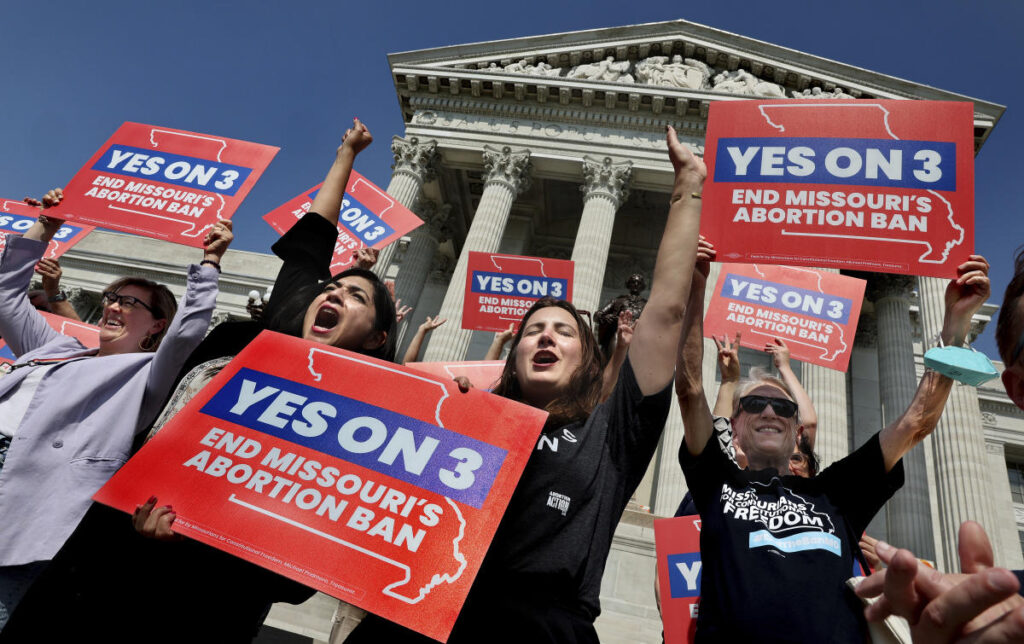Missouri’s recent political landscape surrounding abortion rights has taken a significant turn following the passage of a constitutional amendment aimed at securing abortion rights. Despite this change, Missouri’s Republican Attorney General, Andrew Bailey, has committed to enforcing existing laws that restrict abortion, especially after the point of fetal viability. This commitment comes upon a request from the state’s incoming GOP governor, Mike Kehoe. According to Bailey, while the newly passed amendment does allow for some protections — notably in cases where a healthcare provider finds an abortion necessary to safeguard the life or health of the pregnant individual — he maintains that the government retains the authority to uphold certain restrictions on abortion even beyond viability. This position indicates a complex interplay between newly established rights and pre-existing laws, underscoring the challenges that lie ahead in the state’s abortion discourse.
Voters in Missouri have made their voices heard by approving a ballot measure that enshrines abortion rights in the state constitution, yet highlights remain concerning the restrictions that come after fetal viability—a term denoting the gestational age at which a fetus may survive outside the womb. Medical professionals indicate that this point generally occurs after the 21st week of pregnancy, but it is not strictly defined. Attorney General Bailey’s assertion that existing statutes remain enforceable after viability represents an intent to uphold a robust regulatory framework regarding abortion procedures, potentially curtailing access for many seeking reproductive healthcare options in Missouri.
The success of the Missouri amendment mirrors broader trends observed in several other states regarding abortion rights advocacy. While abortion rights advocates celebrated the Missouri vote as one of seven successful measures to protect abortion rights across various states, they faced setbacks in states like Florida, Nebraska, and South Dakota, where similar amendments were rejected. Other states such as Arizona, Colorado, Maryland, and Montana witnessed supportive amendments, while Nevada’s measure is pending a reconfirmation vote in 2026. This mosaic of outcomes reflects a national battleground where public sentiment toward reproductive rights continues to evolve, challenging lawmakers to adapt to changing societal expectations.
Following the electoral success of the amendment, Planned Parenthood affiliates in Missouri swiftly initiated legal action, aiming to invalidate not only the state’s existing abortion ban but also several regulatory laws that complicate access to abortion services. This lawsuit accentuates the heightened tension between advocates seeking to protect reproductive health rights and a state government willing to enforce its existing legal framework. By pursuing legal challenges, advocates aim to clarify the new boundaries of abortion rights within the state and potentially eliminate obstacles that could hinder access.
Concerns surrounding the amendment center on its provisions allowing lawmakers to impose restrictions on abortions post-viability, a factor that generated debate among abortion rights proponents. Some advocated for absolute protections while others recognized that compromising on this issue might be necessary to secure broader access rights. This tug-of-war encapsulates the contentious nature of policymaking in a polarized political environment where compromise might result in effective regulation that still poses barriers to reproductive healthcare access.
As the amendment takes effect on December 5, 2023, the implications for Missouri’s reproductive landscape remain profound. The onus now falls on advocates and legal representatives to navigate this complex interplay of newly enshrined rights and longstanding prohibitive statutes. In a state where access to abortion has been under continuous threat, the outcome of the pending lawsuit remains critical not only for Missouri residents but for the wider dialogue on reproductive rights throughout the United States. The coming months will likely witness a multitude of legal and legislative maneuvers as both sides of the issue grapple for influence in shaping the future of abortion access in the state.

